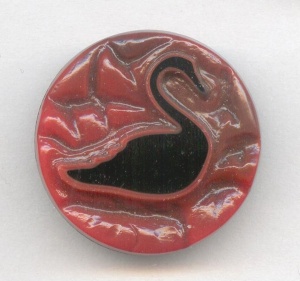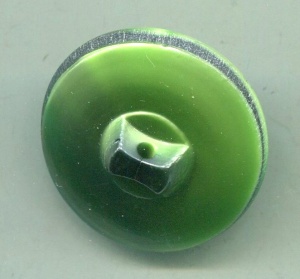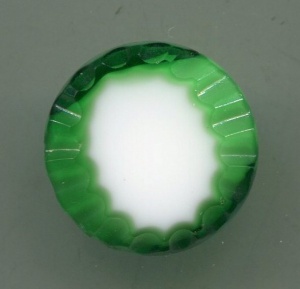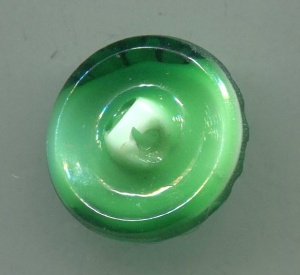Cased glass–vintage era canes and buttons


Background/Story
Cased glass buttons are not common and often misunderstood. Color determination may be tricky, since they are molded from a cane that is bi-color. The cane’s core determines how the button is classified as to color, regardless of the predominant color that shows on the surface. A cross-section view of the cane makes this concept easier to visualize. Canes made of contrasting colors will result in bi-color buttons, the “base color” coming from the inner core color of the cane, the other from the outer thin layer on the core. It is much like having a built-in decorative overlay. Some types of vintage glass made in Germany and the Czech Republic came from cased canes. Satin glass, moonglows, and DIGS (design in glass surface) are the main examples. Single color moonglows and satin glass utilized canes with a color core cased with clear colorless glass. It is the clear colorless glass that adds the translucent quality these buttons.






Share this:
- Click to share on LinkedIn (Opens in new window)
- Click to print (Opens in new window)
- Click to share on Tumblr (Opens in new window)
- Click to share on Twitter (Opens in new window)
- Click to share on Reddit (Opens in new window)
- Click to share on Pocket (Opens in new window)
- Click to share on Pinterest (Opens in new window)
